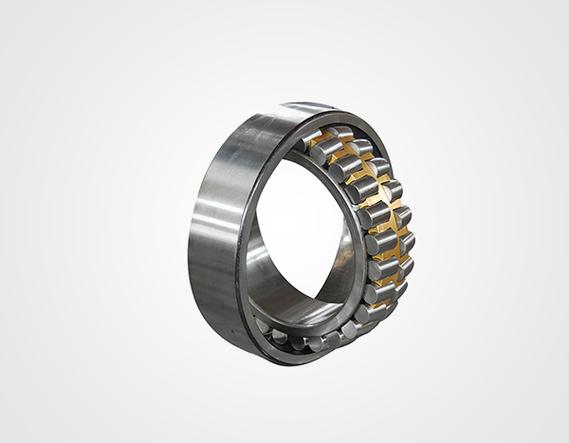The Ultimate Guide to Tapered Roller Bearings: Applications, Maintenance, and Selection Tips
Tapered roller bearings are precision components designed to handle combined radial and axial loads efficiently. Their conical geometry allows smooth rotational movement while reducing friction in machinery. Widely used in automotive, aerospace, and industrial equipment, these bearings offer superior durability and load-carrying capacity compared to other bearing types.
Table of Contents
1. tapered roller bearings applications2. tapered roller bearing installation
3. tapered roller bearing maintenance
4. how to choose tapered roller bearings
5. tapered roller bearing common issues
1. Tapered Roller Bearings Applications

Tapered roller bearings serve critical roles across multiple industries. In automotive systems, they support wheel hubs and transmission components, handling both vehicle weight and cornering forces. Industrial gearboxes utilize these bearings for their ability to manage heavy radial loads and moderate thrust loads simultaneously. Aerospace applications benefit from their precision in aircraft engine components, while agricultural machinery relies on their durability in harsh operating conditions. Mining equipment manufacturers prefer tapered roller bearings for their shock resistance in crushers and conveyors. The unique ability to handle combined loads makes them indispensable in wind turbine pitch control systems and railroad axle boxes.
2. Tapered Roller Bearing Installation
Proper installation ensures optimal bearing performance and longevity. Begin by cleaning all components and verifying dimensional tolerances. Use specialized tools for press-fitting to prevent raceway damage. Maintain precise alignment during assembly, particularly when mounting bearing pairs in back-to-back or face-to-face configurations. Apply appropriate preload using torque wrenches or axial displacement measurement tools. For automotive wheel bearings, follow manufacturer specifications for hub nut tightening sequences. Industrial installations require temperature monitoring during shrink-fitting processes. Always use clean lubrication during assembly and verify rotational smoothness post-installation.
3. Tapered Roller Bearing Maintenance
Effective maintenance extends tapered roller bearing service life significantly. Implement regular lubrication schedules using manufacturer-recommended greases. Monitor lubricant condition through oil analysis programs. Conduct vibration analysis every 3-6 months to detect early signs of wear or misalignment. Visual inspections should check for brinelling, spalling, or discoloration. For sealed bearings, replace units when seal integrity becomes compromised. In high-temperature environments, consider oil-air lubrication systems. Always clean bearing housings during relubrication to prevent contamination. Maintain proper records of maintenance activities and performance metrics for predictive analysis.
4. How to Choose Tapered Roller Bearings
Selecting the right tapered roller bearings requires comprehensive analysis of operational parameters. Calculate equivalent dynamic load using established formulas that account for radial and axial force components. Consider speed ratings relative to application requirements - high-speed applications may require specially graded bearings. Evaluate lubrication methods: oil bath, grease pack, or circulating oil systems. Material selection becomes critical in corrosive environments, with options including stainless steel or ceramic hybrids. Review ISO dimensional standards (ISO 355) for interchangeability. For heavy shock load applications, specify bearings with increased roller count and enhanced heat treatment. Always verify clearance classifications (C0 to C5) match operational thermal expansion needs.
5. Tapered Roller Bearing Common Issues
Premature failure in tapered roller bearings often stems from specific preventable causes. False brinelling occurs due to vibration during transportation, requiring proper storage procedures. Lubrication breakdown leads to adhesive wear, necessitating improved grease selection or relubrication intervals. Contamination ingress through damaged seals causes abrasive wear patterns. Misalignment manifests as uneven wear tracks on raceways. Overheating issues may indicate excessive preload or insufficient lubrication. Electrical arcing damage appears as fluted surfaces in electrically active environments. Corrosion pitting develops from moisture intrusion or incompatible lubricant chemistry. Regular condition monitoring helps identify these issues early.
Understanding tapered roller bearings' multifaceted applications, proper installation techniques, and proactive maintenance strategies forms the foundation of optimal machinery operation. From selecting appropriate bearing configurations to troubleshooting common operational challenges, this comprehensive guide addresses critical aspects that impact performance and longevity. The following sections provide actionable insights into maximizing bearing efficiency across various industrial contexts.
This complete guide to tapered roller bearings covers essential maintenance practices, selection criteria, and troubleshooting methods. By implementing these professional techniques, engineers can significantly enhance equipment reliability, reduce downtime, and optimize operational efficiency across automotive and industrial applications. Proper understanding of bearing applications and maintenance fundamentals ensures long-term performance in demanding operating conditions.




 13869596835
13869596835